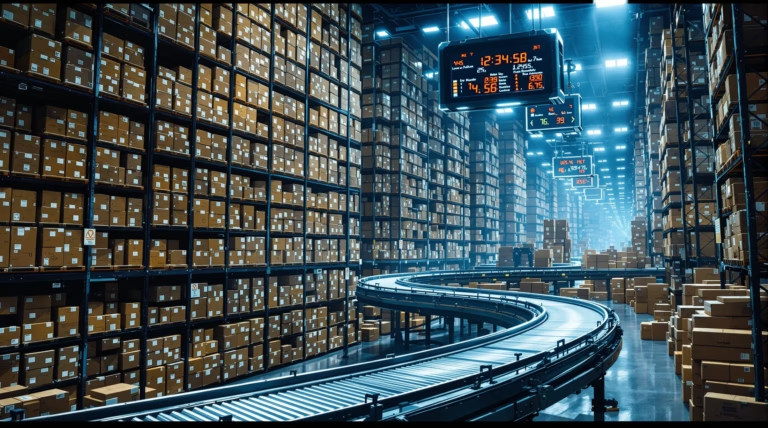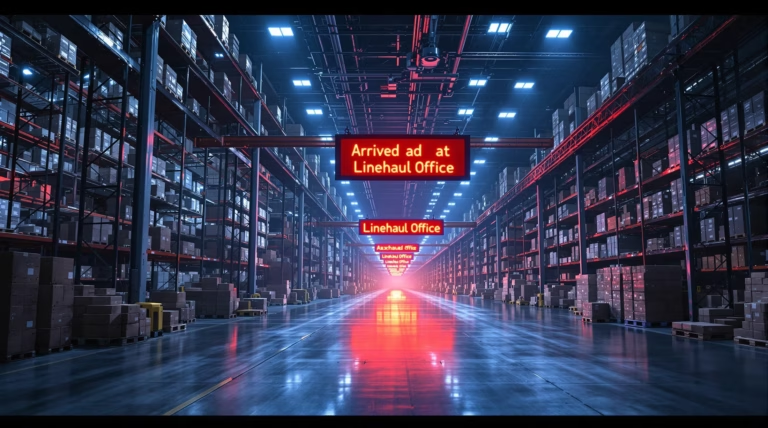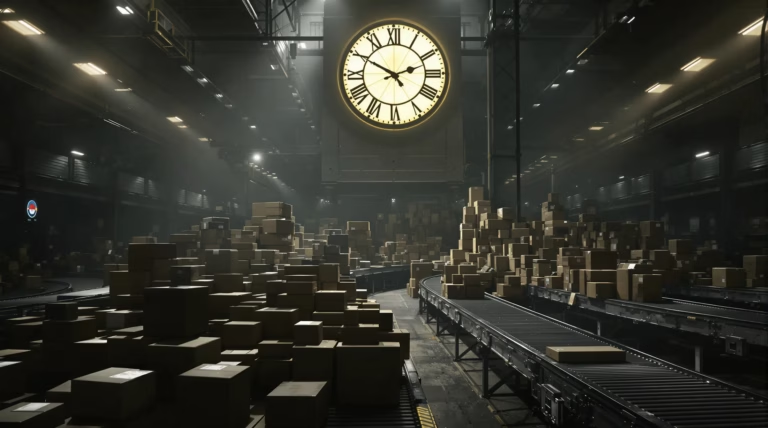Line haul logistics plays a vital role in global shipping networks, connecting businesses and consumers across vast distances. Let’s explore how these specialized facilities operate and why they’re essential for efficient freight transportation.
Understanding the Line Haul Office in Logistics
Line haul logistics focuses on long-distance transportation of freight and goods between major distribution centers, often crossing state lines or international borders. Unlike local deliveries, these operations require specialized facilities to maintain efficiency and continuity throughout the supply chain.
The line haul office serves as a sophisticated logistics hub rather than a conventional office setting. These strategic facilities act as crucial connection points in the global logistics network, enabling seamless package movement between different carriers while maintaining tracking integrity and delivery schedules.
What is a Line Haul Office?
A line haul office operates as a specialized facility where shipping methods transition between different transportation modes. These logistics hubs focus exclusively on the physical movement and processing of freight, facilitating transfers between:
- Ships to trains
- Trucks to planes
- Various combinations of transportation modes
These facilities feature comprehensive infrastructure including large-scale sorting systems, loading docks, and transportation networks designed for high-volume package handling. For international shipments, these hubs serve as critical junctures where overseas packages are processed before routing to last-mile carriers.
Role of the Line Haul Office in the Shipping Process
The line haul office functions as the central nervous system within the shipping network, performing several critical operations:
- Destination-based package sorting and organization
- Coordination across air, land, and sea transportation networks
- Compliance management with postal service standards
- International shipping regulation adherence
- Shipment consolidation for cost optimization
- Carbon footprint reduction through efficient routing
Key Functions of a Line Haul Office
Line haul offices serve as logistics command centers, managing multiple vital functions within the transportation network. These dynamic hubs directly impact global supply chain performance through their operational efficiency and strategic positioning.
Sorting and Consolidation of Packages
The core operations involve sophisticated sorting and consolidation processes, utilizing advanced scanning systems and sorting technologies to process thousands of parcels hourly. The consolidation process includes:
- Destination-based package grouping
- Strategic bundling for efficient transport
- Palletizing and containerizing shipments
- Documentation preparation
- Customs compliance verification
- Quality control checks
Route Optimization and Transit Time Reduction
Route optimization employs advanced logistics software and real-time data analytics to consider multiple variables:
| Factor | Impact on Routing |
|---|---|
| Weather conditions | Route adjustments and alternative planning |
| Carrier availability | Transportation mode selection |
| Fuel costs | Cost-efficient routing decisions |
| Traffic patterns | Transit time optimization |
Challenges Faced by Line Haul Offices
Line haul offices face complex operational challenges within global supply chains that directly impact shipping efficiency. These logistics centers must navigate:
- Unpredictable transportation networks
- Fluctuating carrier availability
- Variable regulatory requirements across countries
- Weather-related disruptions
- Infrastructure limitations
- Unexpected shipping volume surges
During peak seasons, such as major holidays or global sales events, these facilities must dramatically scale their capacity while maintaining precise sorting and routing processes. Rising customer expectations for faster delivery times create additional pressure to optimize operations while balancing cost-efficiency with service quality.
Common Causes of Shipping Delays
Shipping delays at line haul offices typically result from several recurring challenges:
- Package missorting and incorrect routing
- System update lags in tracking platforms
- Infrastructure bottlenecks during peak periods
- Limited loading dock availability
- Staffing shortages
- Equipment malfunctions
- External transportation disruptions
- Inadequate package preparation by shippers
Impact of Customs Processing on Delivery Times
| Customs Process | Impact on Delivery |
|---|---|
| Physical examination | Additional processing time for content verification |
| Value declaration checks | Potential holds for documentation review |
| Duties and taxes assessment | Processing delays for payment clearance |
| Import restriction compliance | Extended holds for regulatory verification |
Advanced line haul operations implement pre-clearance protocols, electronic documentation systems, and dedicated customs compliance teams to mitigate these challenges. However, customs processing remains a critical yet unpredictable factor in international shipping timelines that requires continuous management to meet delivery expectations.
Tracking and Customer Experience
Line haul offices generate crucial status updates that provide transparency throughout the shipping journey. The “Arrived at Linehaul Office” status indicates a package has reached a major distribution hub for next-leg processing. This visibility enables better resource allocation for logistics companies and helps customers understand their shipment’s progress.
How Tracking Information is Updated
The tracking update process involves multiple scanning checkpoints within the line haul office:
- Initial arrival scan triggering “Arrived at Linehaul Office” status
- Progressive scans through sorting stages
- Real-time updates to tracking databases
- Integration with customer-facing tracking platforms
- Cross-border tracking system coordination
When tracking information appears stalled at the “Line-haul Office” status, it typically indicates the package is undergoing processing, consolidation, or carrier transfer. For international shipments, experts recommend waiting until after the estimated delivery date before inquiring about delays, as packages often continue moving even when tracking updates temporarily pause.
Managing Customer Expectations and Experiences
Effective communication about line haul operations enhances customer satisfaction, even during delays. Modern logistics companies provide comprehensive insights into line haul office operations, helping customers understand package processing times. Educational materials explaining transportation method transitions – whether from ships to trains or trucks to planes – provide valuable context for interpreting tracking updates.
Setting realistic delivery expectations is essential for customer experience management. Line haul offices must consider several factors affecting delivery times:
- Truck capacity optimization requirements
- Varying shipment volumes
- Destination popularity
- Transportation mode transitions
- Regional processing schedules
| Communication Strategy | Customer Benefits |
|---|---|
| Detailed shipping policies | Clear understanding of potential processing times |
| Estimated delivery windows | More accurate planning capabilities |
| Real-time tracking updates | Increased visibility of shipment progress |
| Advanced notification systems | Proactive updates about facility entry and exit |
Leading companies have implemented sophisticated notification systems that alert customers when packages enter and exit line haul facilities. These updates provide reassurance that shipments continue progressing toward delivery, even during temporary pauses in visible movement.




